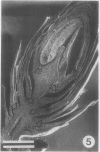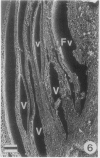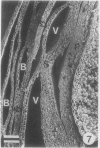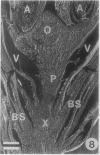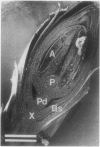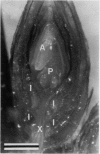Abstract
Differential thermal analysis detected two freezing events when dormant forsythia (Forsythia viridissima Lindl.) flower buds were cooled. The first occurred just below 0°C, and was coincident with the freezing of adjacent woody tissues. The second exotherm appeared as a spike between −10 and −25°C and was correlated with the lethal low temperature. Although this pattern of freezing was similar to that observed in other woody species, differences were noted. Both direct observations of frozen buds and examination of buds freeze-fixed at −5°C demonstrated that ice formed within the developing flowers at temperatures above the second exotherm and lethal temperature. Ice crystals had formed within the peduncle and in the lower portions of the developing flower. Ice also formed within the scales. In forsythia buds, the developing floral organ did not freeze as a unit as noted in other species. Instead the low temperature exotherm appeared to correspond to the lethal freezing of supercooled water within the anthers and portions of the pistil.
Full text
PDF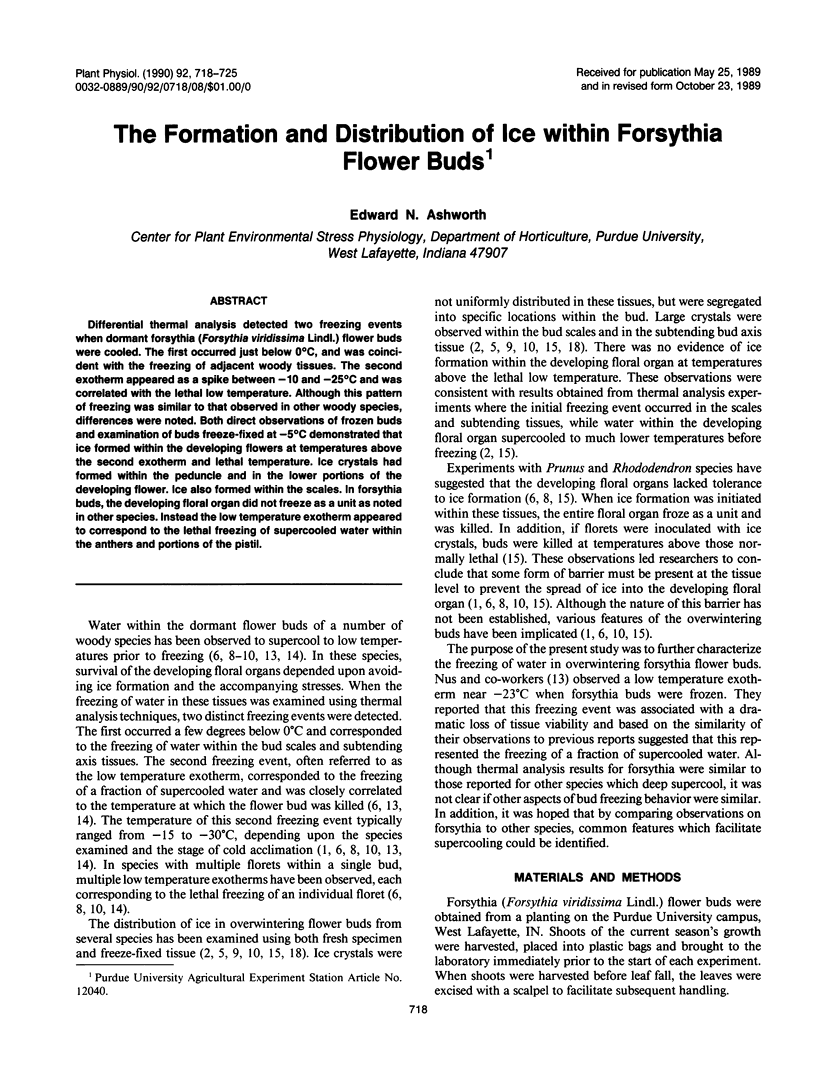

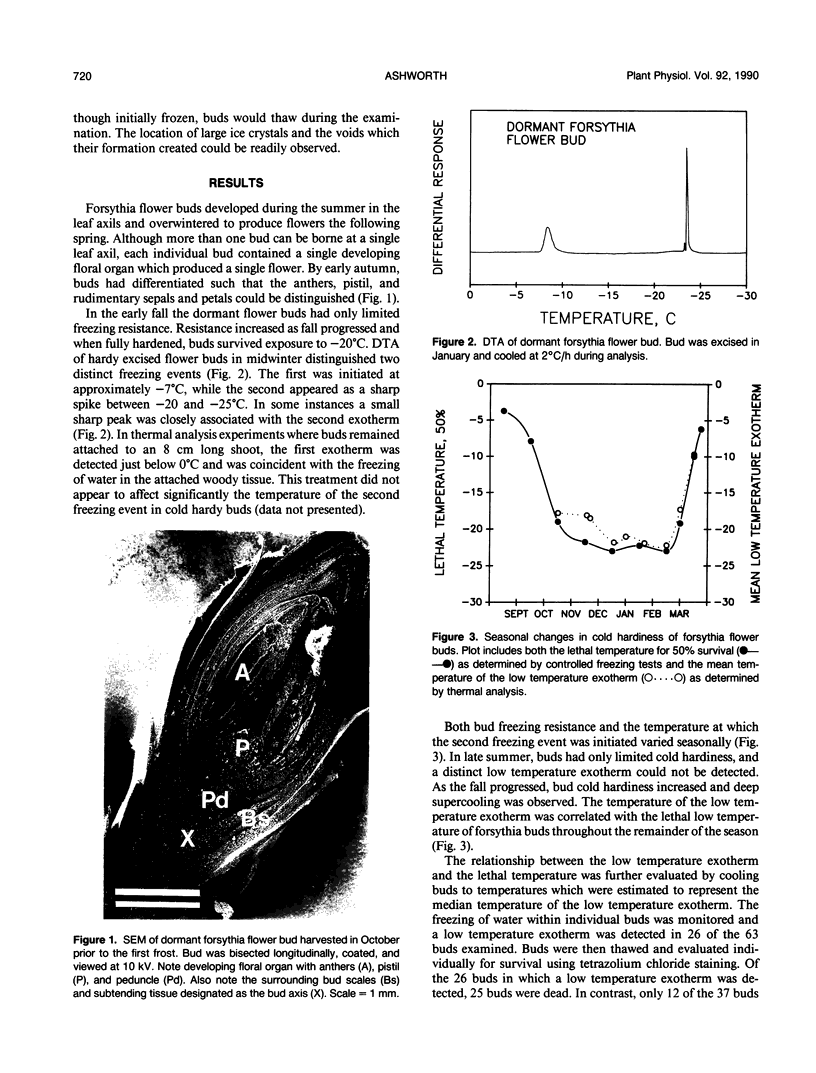
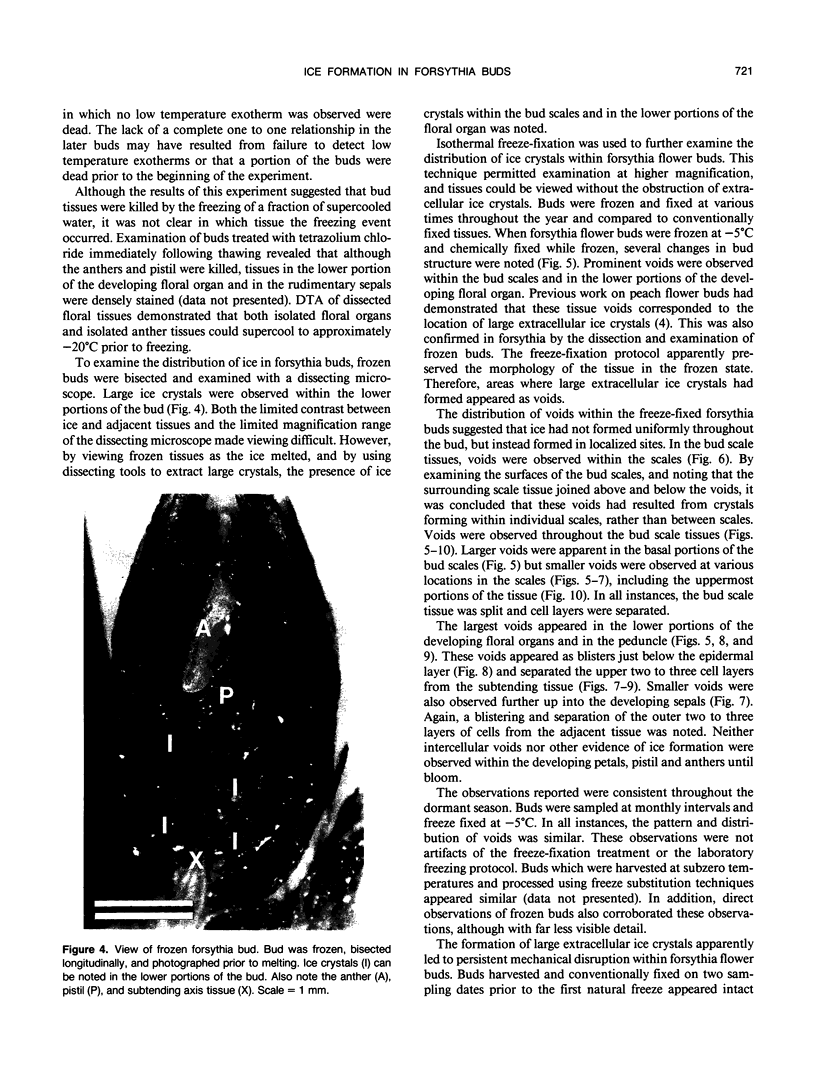
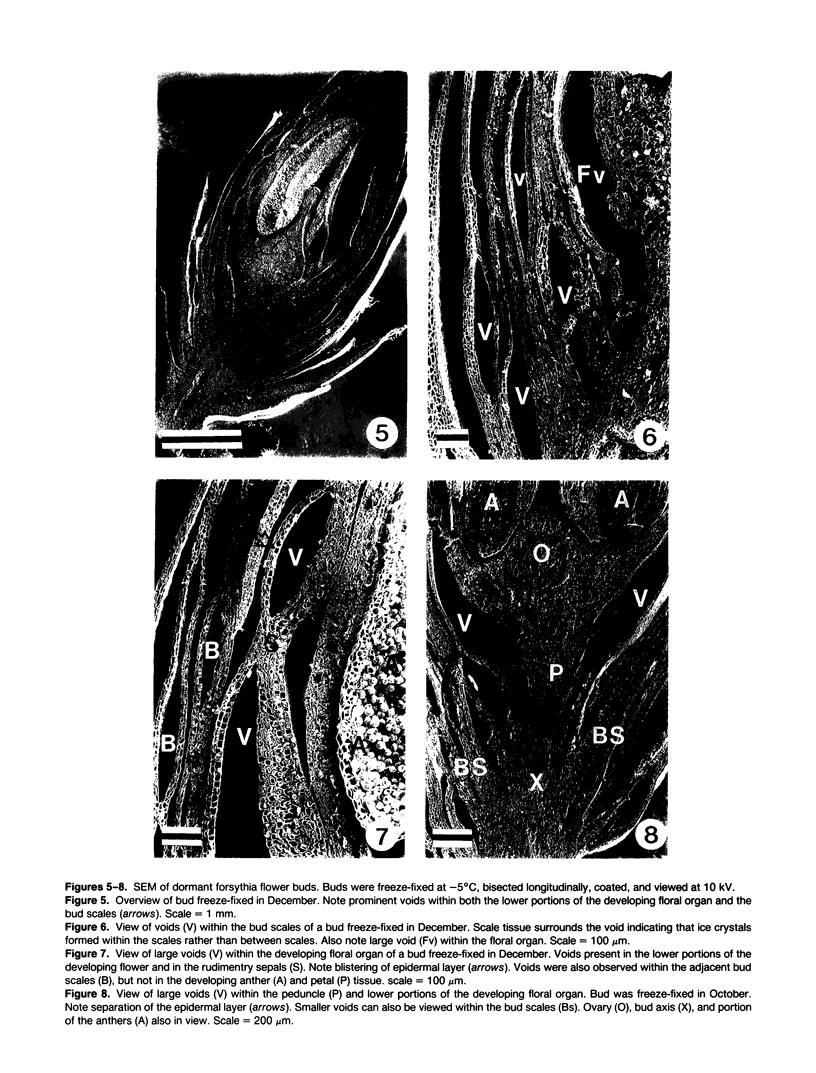
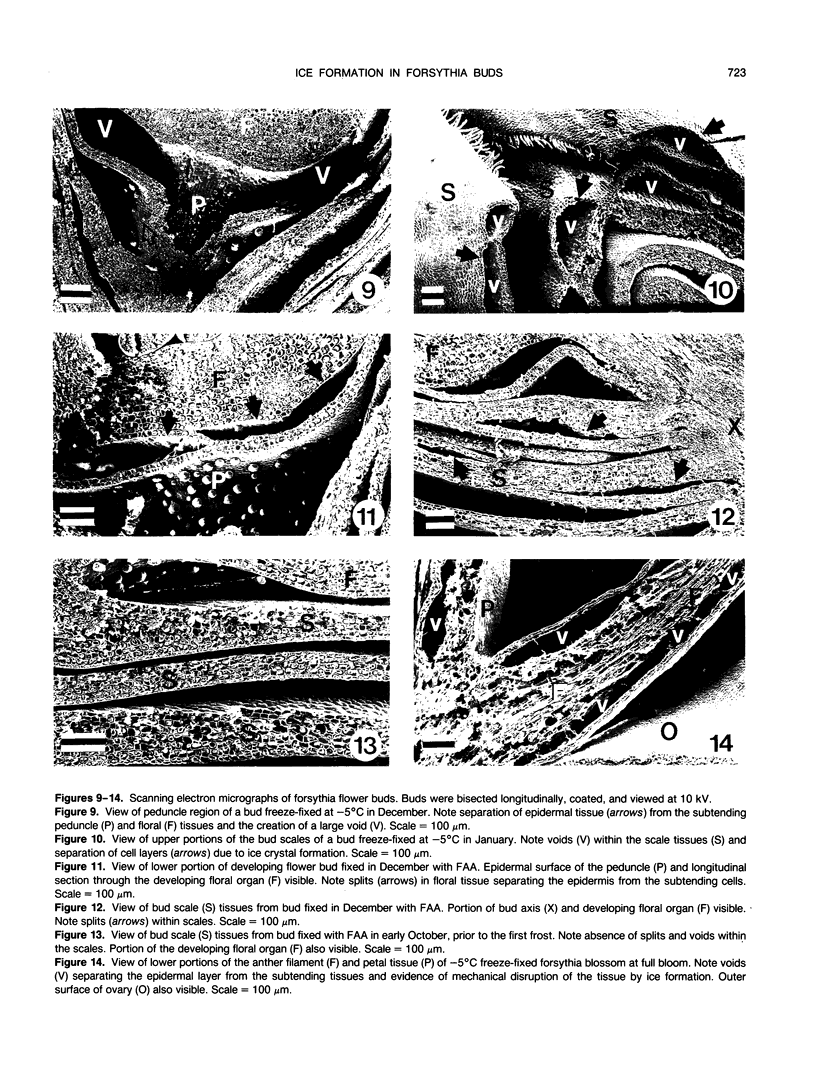
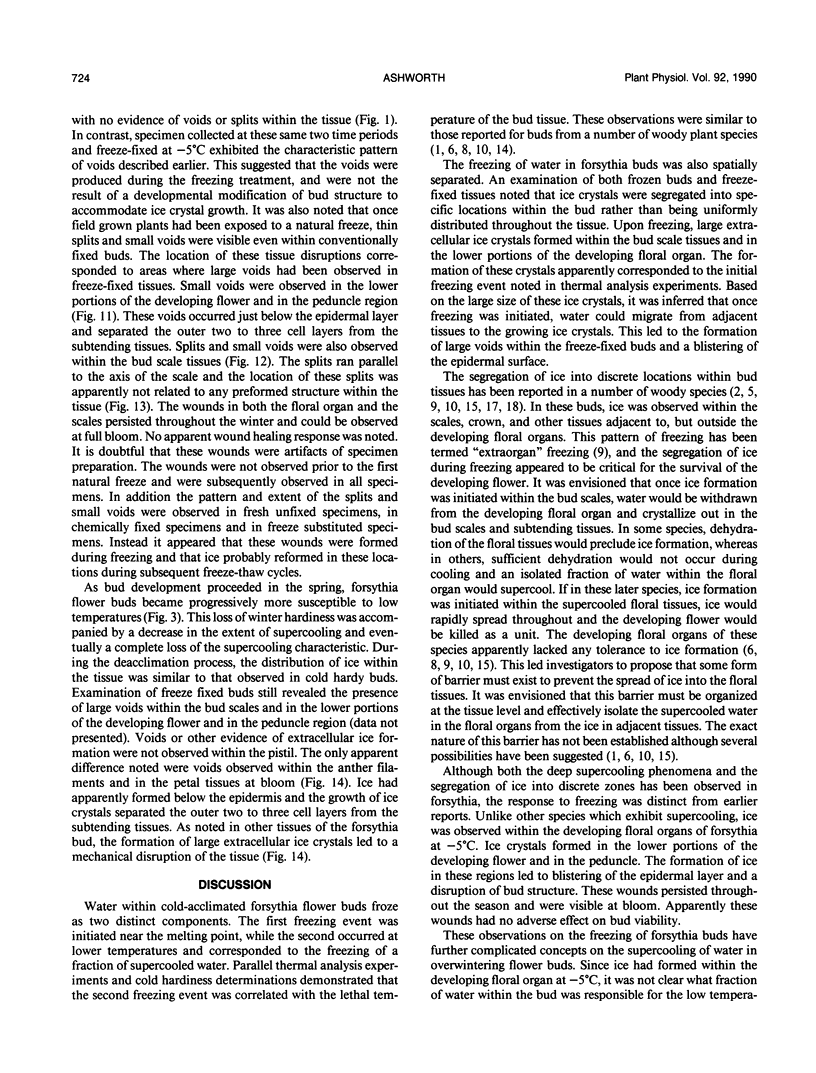
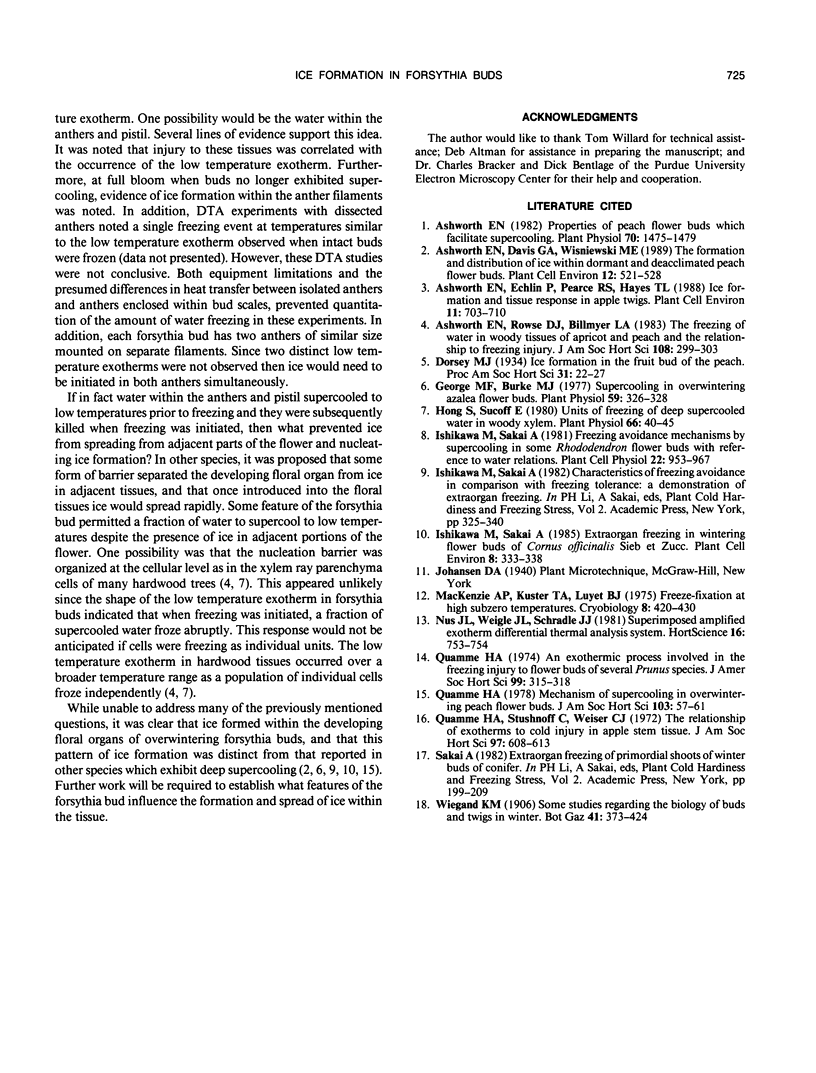
Images in this article
Selected References
These references are in PubMed. This may not be the complete list of references from this article.
- Ashworth E. N. Properties of peach flower buds which facilitate supercooling. Plant Physiol. 1982 Nov;70(5):1475–1479. doi: 10.1104/pp.70.5.1475. [DOI] [PMC free article] [PubMed] [Google Scholar]
- George M. F., Burke M. J. Supercooling in overwintering azalea flower buds: additional freezing parameters. Plant Physiol. 1977 Feb;59(2):326–328. doi: 10.1104/pp.59.2.326. [DOI] [PMC free article] [PubMed] [Google Scholar]
- Hong S. G., Sucoff E. Units of freezing of deep supercooled water in woody xylem. Plant Physiol. 1980 Jul;66(1):40–45. doi: 10.1104/pp.66.1.40. [DOI] [PMC free article] [PubMed] [Google Scholar]



